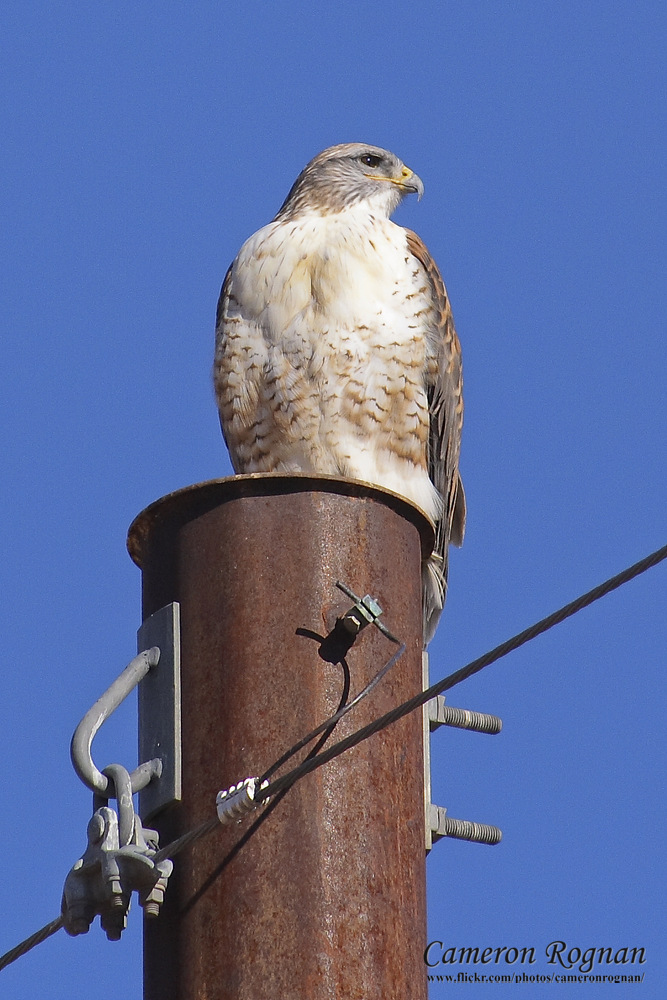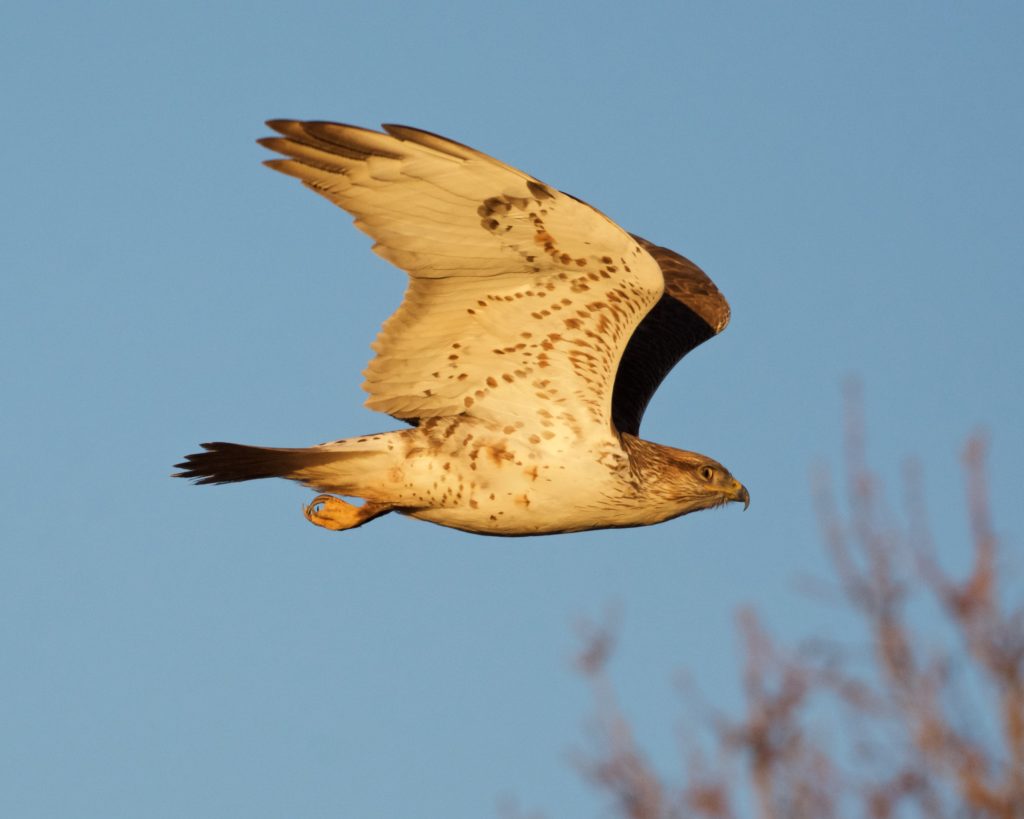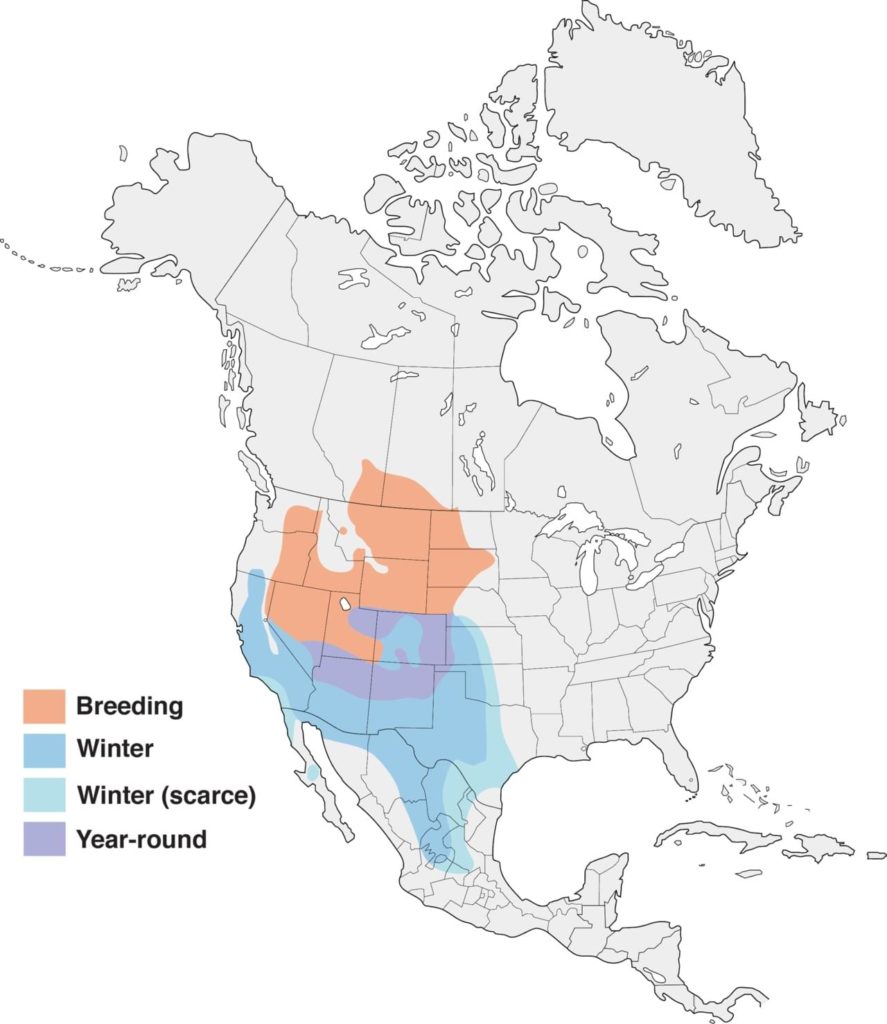Ferruginous Hawk
(Buteo regalis)
PacifiCorp (operating as Rocky Mountain Power in Utah), has teamed up with the BLM Moab office and Utah Division of Wildlife Resources to assist in the preservation of the ferruginous hawk, a state-sensitive species. A desert species, the ferruginous hawk can be identified by rusty-red leggings, which contrast against a light colored breast and belly. They also have a distinctive “gape,” or long yellow mouth border that extends to the back of their eye. Dark morph ferruginous hawks, which are uniformly dark below, account for 10% or less of their population.
In east central Utah, the greatest threat to this hawk is limited nesting habitat. While raptors in other ecosystems may choose vertical cliffs or tall trees for nesting, suitable nest sites in the desert are harder to come by. The ferruginous hawk often resorts to nesting on hilltops, low buttes, rocky outcrops, or crown of a juniper. Such nests are vulnerable to ground predators and result in higher rates of mortality among nestlings.
Throughout its range in the Western United States, populations of ferruginous hawks are in decline. This has become a source of increasing concern among conservationists and agencies charged with their welfare. “Potential threats to the ferruginous hawk have resulted in classification as a sensitive species, which affords this bird special attention under the law. Potential threats and negative population changes are taken seriously and are countered with mitigation measures to avert further population declines” said
Tony Wright, DWR Sensitive Species Biologist.
In the hope of bolstering ferruginous hawk populations in the Cisco Desert, PacifiCorp and its government partners constructed multiple pole-mounted nesting platforms to provide nest sites which are beyond the reach of ground predators. The process and equipment used for installing these structures is similar to that used to erect power poles.
“The decline of ferruginous hawk populations is a serious concern,” said Sherry Liguori, Lead Avian Biologist for PacifiCorp. “We are pleased that PacifiCorp, DWR, and BLM are able to partner on such projects to benefit the species.”
“We are committed to taking actions to keep this species from being listed as threatened or endangered,” said Wright.
“Our hope is that this project will increase the nesting success of these hawks, which play an important role in the desert ecosystem, which supports other species of concern, including the white-tailed prairie dog, burrowing owl, and kit fox. We greatly appreciate the employees and management of PacifiCorp and the BLM who made this project happen.” Follow this link for more information on ferruginous hawk preservation.
Despite their declines, ferruginous hawks are still the second most common Buteo seen in the St. George area (after red-tailed hawks). They are relatively common in the Red Cliffs Desert Reserve during winter, and they may be found throughout the area.


